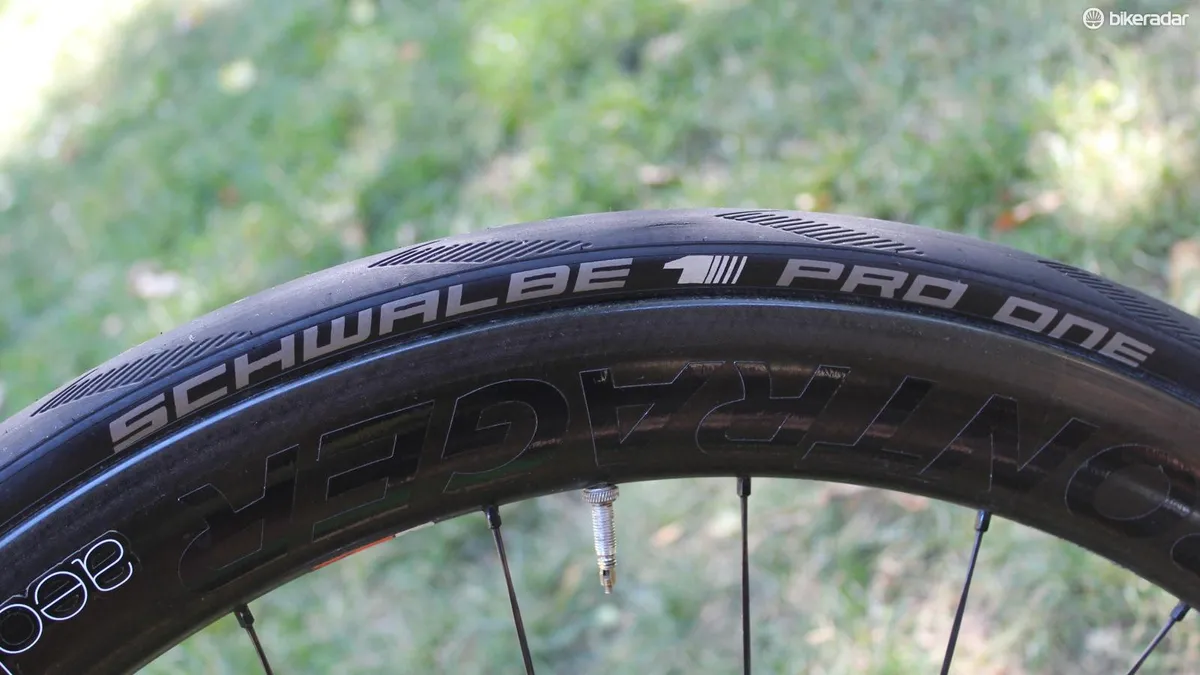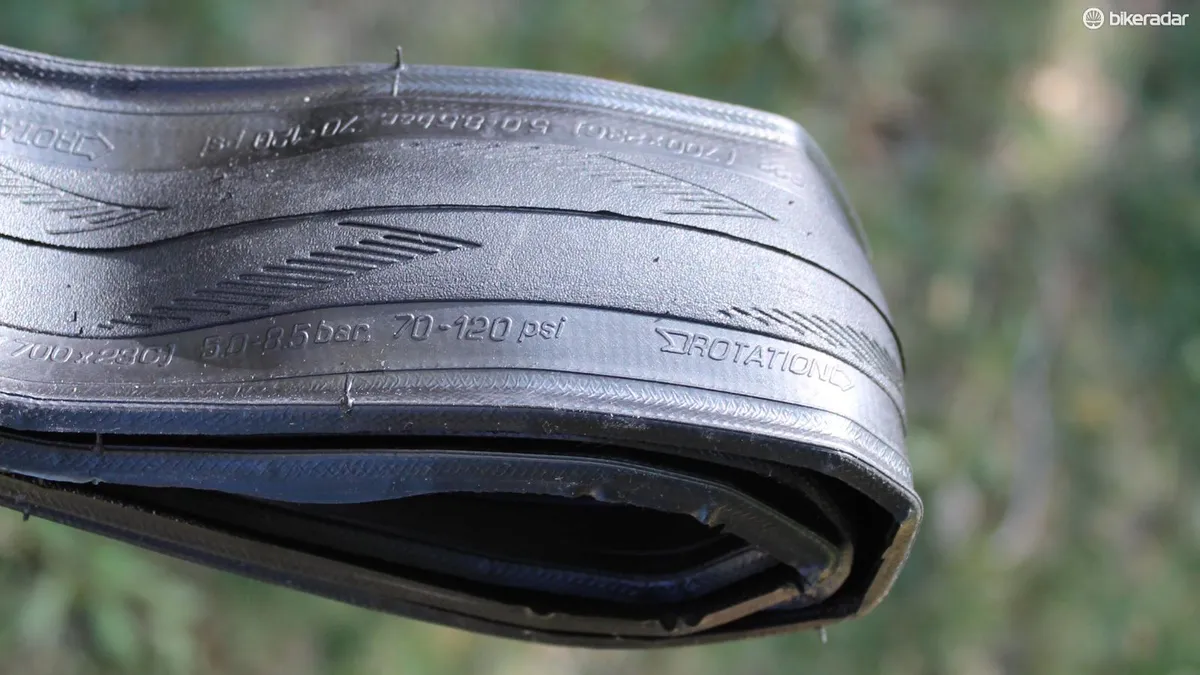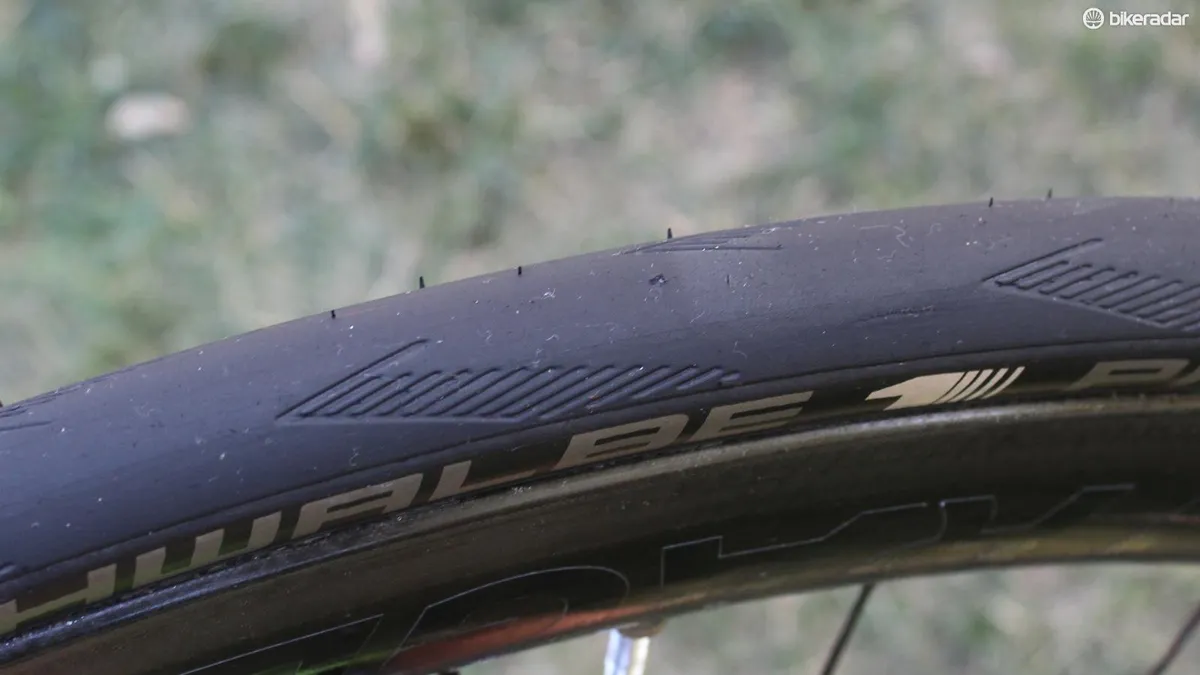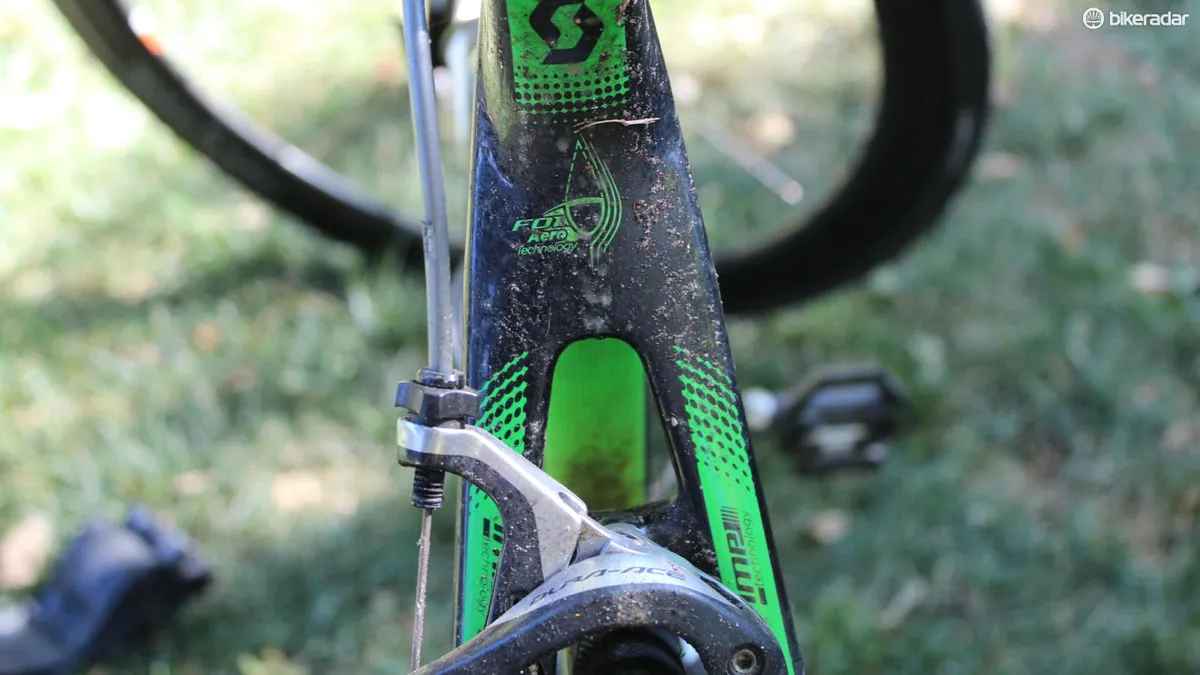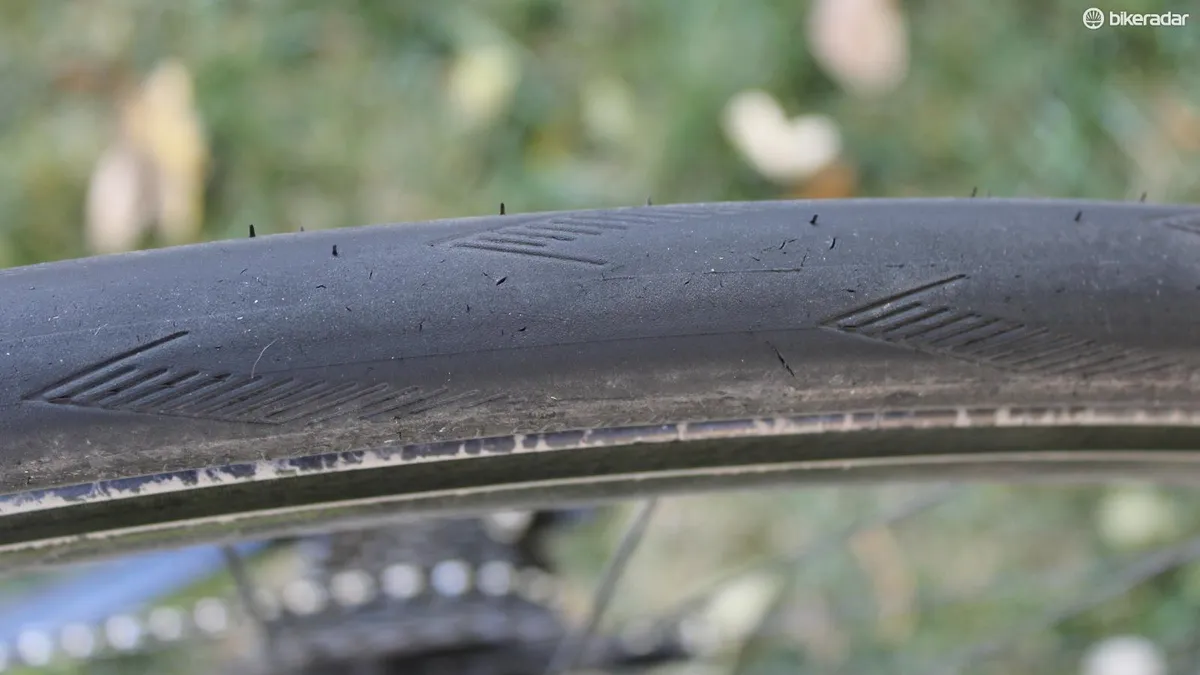I'll admit I smirked at the 'tubeless easy' logo when I pulled the Schwalbe Pro One tubeless tyres out of the box. In my experience, road tubeless has proven handy in reducing flats, but 'easy' is not a word I would use for describing the installation or changing of road tubeless tyres. The Pro Ones proved me wrong; they are indeed easy to use. Plus, the 240g tyres are light, fast-rolling and – thus far – flat-free.
The new Pro One uses a triple-compound tread with a harder central area for better efficiency, soft shoulders for cornering grip and a very soft base layer beneath both of the others that doesn’t contact the ground but helps lower the rolling resistance. Schwalbe tests rolling resistance on a drum with a 50kg / 110lb load weighting a wheel spinning at 30kph. In that test, the durable Schwalbe Durano 'costs' 29 watts of resistance.The Schwalbe One clincher measured 22w, and the One Tubeless 19w. The new Pro One, Schwalbe says, burns just 17w of your effort to turn it.
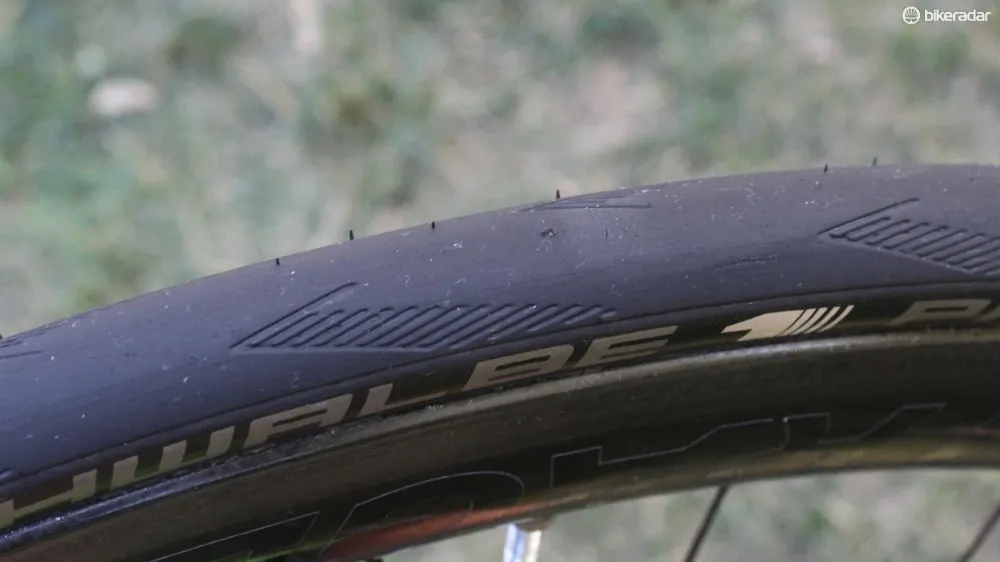
Small holes like the one at the centre are sealed before you even realise your tyre has been punctured
The Pro One is available in 23, 25 and 28mm widths. I tested the 23mm, which I weighed at 240g (the same as Hutchinson's 23mm Atom tubeless tyre) but measured it at a plump 26mm when mounted on Bontrager's Aeolus 5 TLR D3 carbon clinchers. This is roughly 20g heavier than an excellent clincher like a Continental Grand Prix 4000S or a Vittoria Corsa CX Open. When you do the rest of the math — adding in 60g for sealant or 80g for an inner tube — the weight becomes a wash. This is a big step forward for road tubeless.
I rode the Pro Ones on a variety of surfaces, from choppy gravel roads to buttery smooth tarmac, and did a few rides in the rain. After about 400 miles, the treads show a fair amount of wear, including small cuts. The tradeoff for the positive grip and supple feel of soft rubber is shorter life.
Yet despite rolling over broken glass, rough rocks and who knows what else, the tyres have not flatted. On one ride I must have hit something that pierced the tyre, but I had no idea until the next day when I was pulling the bike off the hook in my garage and noticed sealant on the seatpost. An event that would have cost five minutes, a tube and an air cartridge mid-ride now only cost about two minutes of clean-up after the fact.
If and when you do get a puncture, clean up the sealant that sprays onto your frame at the end of the ride. The longer you leave it, the harder it is to clean off.
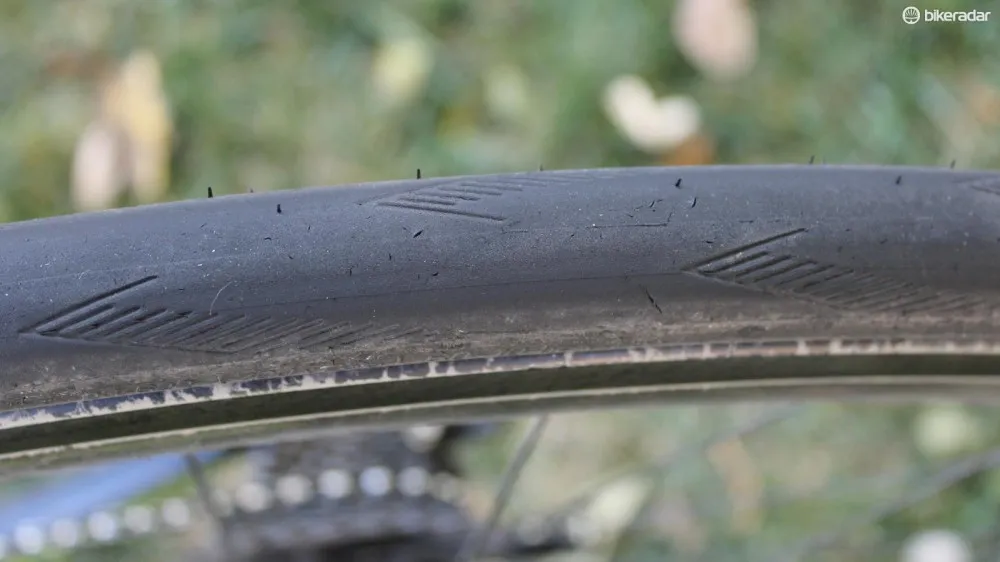
The Pro One isn't ultra-durable – the feel and grip come from fairly soft rubber. This one has about 400 miles on it, much of that dirt
So how do they ride? Let me put it to you like this: pumped up to 90 psi, they feel like they're at 70psi. The Schwalbes conform to the road's imperfections as you ride, reducing the jar and inflating your confidence in corners.
Tubeless tyres companies like to answer the 'why road tubeless?' questions with talk of lowered rolling resistance and the ability to run lower pressures than clinchers. For me, the latter argument doesn't make much sense, as I can run down to 70psi with tubes, and wouldn't want to go lower than that anyway. (I weigh 185lb / 84kg.) But removing the friction an inner tube causes makes sense. Still, the biggest potential positive of road tubeless for me has been the promise of instant flat fixes. Which leads to the big question: Is the hassle of dealing with über-tight tyre beads and messy sealant worth it?
So back to that 'tubeless easy' claim. I have snapped tyre levers and invented creative new curse phrases with some road tubeless tyres, especially when dealing with Bontrager's Aura 5 TLR wheels. (Note that you mount tubeless tyres differently than you do standard clinchers: you begin installing the tyre opposite the valve stem, nestling the bead down in the middle of the rim, then working your way up to the valve stem.) While I can get most clinchers on by hand, I always need a tyre lever for tubeless tyres. Effort for Pro One installation falls between a clincher and any other tubeless tyre I have mounted. That to say, I wouldn't be leery of having to pull it off on the road should a major gash require a boot.
Schwalbe impressed me earlier this year when IAM Cycling riders took the start of Paris-Roubaix on 30mm S-One road tubeless tyres, and the team's Martin Elminger took fifth. After a few hundred miles on the Pro Ones, I'm becoming a convert. If Schwalbe can make a road tubeless tyre with the weight and performance of the Pro One with better durability, it will have a huge winner.
